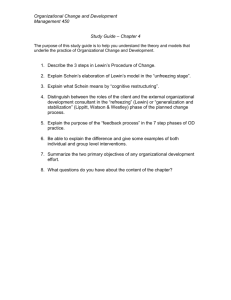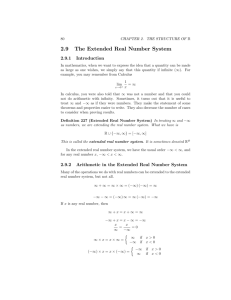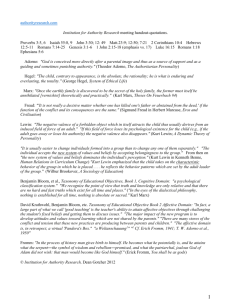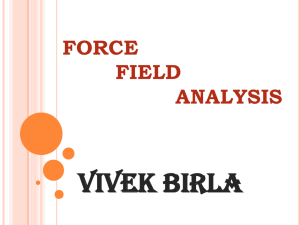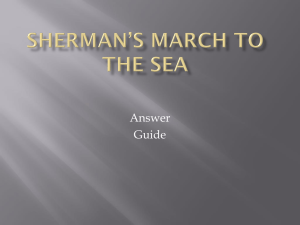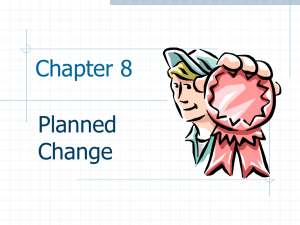PowerPoint Presentation - Ron and Peg Lippitt
advertisement
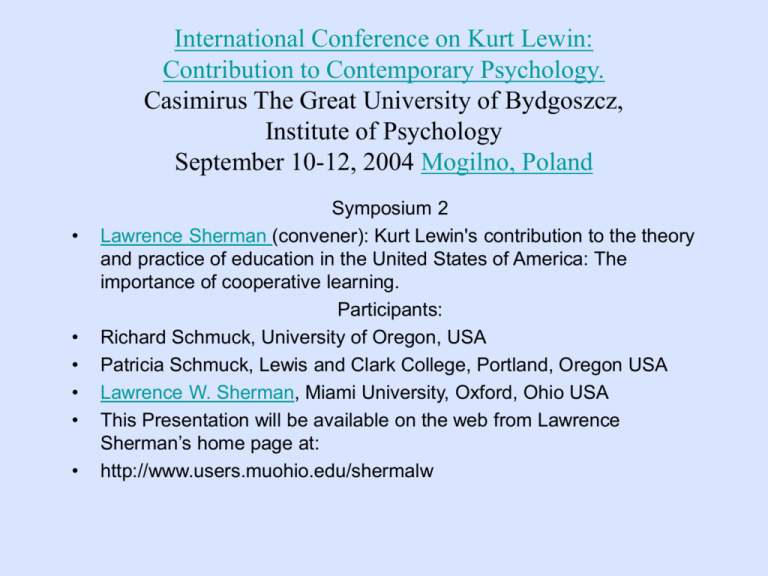
International Conference on Kurt Lewin: Contribution to Contemporary Psychology. Casimirus The Great University of Bydgoszcz, Institute of Psychology September 10-12, 2004 Mogilno, Poland • • • • • • Symposium 2 Lawrence Sherman (convener): Kurt Lewin's contribution to the theory and practice of education in the United States of America: The importance of cooperative learning. Participants: Richard Schmuck, University of Oregon, USA Patricia Schmuck, Lewis and Clark College, Portland, Oregon USA Lawrence W. Sherman, Miami University, Oxford, Ohio USA This Presentation will be available on the web from Lawrence Sherman’s home page at: http://www.users.muohio.edu/shermalw Kurt Lewin Memorial: Mogilno, Poland, 2004 BH = f (P * E) Democratic/Autocratic/Laissez-faire Leadership Group Dynamics Action Research Frustration/Regression Level of Aspiration Sensitivity Training, T-groups Larry Sherman (left), Richard (center) and Pat (right) Schmuck Mogilno, Poland, September 12, 2004 Kurt Lewin: A Truly Global Man Kurt Lewin’s Focus on Children • Initial post at Cornell University, Ithaca, New York, in the School of Home Economics. • University of Iowa, Professor of Child Psychology, Iowa Child Welfare Research Station (now the Institute of Child Behavior and Research • Comment: Alfred Marrow states: “ Although his academic title was Professor of Child Psychology and most of the studies in the years that followed were of children, Lewin’s concern continued to be general psychological theory and experiment.” (Marrow, 1969, p. 87) We believe, however, that this heritage became an important influence or well spring which had considerable influence on American educational practice. FOREIGN HULL VECTORS VALENCES PERSON NEEDS ABILITIES B A R R I E R PSYCHOLOGICAL LIFE SPACE + G O A L R E G I O N Alfred Marrow, Student of Kurt Lewin and author of The Practical Theorist: The Life and Work of Kurt Lewin, (1969) Kurt Lewin Memorial Award, 1964 Morton Deutsch, 1968 Kurt Lewin Memorial Award “A Theory of Cooperation and Competition,” Human Relations, 1949, 2, 129-152. “An Experimental Study of the Effects of Cooperation and Competition upon Group Process,” Human Relations, 1949, 2, 153-158. Major influence on David Johnson’s contributions to the world of cooperative learning. Ron and Peg Lippitt Ann Arbor, Michigan 1960’s? With Lewin and White: Social Climates (democratic, autocratic and laissez-faire leadership styles) Action Research Some other interesting Lewinian connections and influences on American educational practice • • Robert Rosenthal and the Experimenter Biasing Effect, otherwise know as the “Pygmalion Effect”. He reports that this line of study was inspired by his interest and eventual re-publication of the book, Clever Hans, originally published by Otto Pfunst and Carl Stumpf. Carl Stumpf was the director of the Psychological Laboratory at the University of Berlin and is also credited as Lewin’s “dissertation father” by Alfred Marrow. This year (2004) marks the 50th anniversary of the United States Supreme Court’s 1954 Brown vs the Board of Education decision regarding “separate but equal” schools. Kenneth B. Clark’s major testimony along with Gordon Allport and Stuart Cook, before that court was very influential. Clark, Allport and Cook were all past member of Lewin’s Commission on Community Interrelations (C.C.I.). Details of Clark’s involvement have recently been highlighted in the APA’s Monitor on Psychology, Volumn 35, No. 8, pp 56-72. I am presently interested in what some are calling the “Re-segregation” of American schools. The International Association for the Study of Cooperation in Education (I.A.S.C.E) Our genealogy Sherman’s first involvement in 1988 with two presentations, Both dealing with uses of Cooperative Learning pedagogy in “higher education”: 1. 2. Sherman (1988) Sherman & Woy-Hazelton (1988) Kurt Lewin M. Deutsch L. Festinge r R. Lippit t J. Kounin D. Johnson E. Aron son R. Schmuck L. Sherman Creative Confli ct I.A.S.C.E: R. Schmuck , 1st President; R. Slavin, S. Shar an, and others, Past Presidents Jigsaw STP DEC IASCE members and some of t heir Cooperative Learning Techn iques : R. Slavin (STAD, TGT, JIGSAW II, TAI, CIRC) S. & Y. SHARAN (GROUP INVESTIGATION) D. DAN SEAREAU (SCRIPTED STUD ENT DYAD S J. FANTUZZO (RECIPRICAL P EER TUTO RING) S. KAGAN (COOP-COOP) E. COHEN (COMPLEX INSTRUCTION) L. SHERMAN (DEC) R. & D. John son (Cooperative Confli ct) Five Basic Elements of Cooperative Learning • • • • • Positive Interdependence: Individual Accountability: Face To Face Interactions: Heterogeneous Grouping: Social Skills: Dick and Pat Schmuck, 1988, IASCE Conference, Tel Aviv, Israel Pat was also a student of Ron Lippitt. Pat is a Professor at Lewis & Clark College, Portland Oregon Dick is a Professor Emeritus, University of Oregon PAT (left) and RICHARD (center) SCHMUCK AND SHLOMO SHARAN (right), IASCE CONFERENCE 1988, TEL AVIV, ISRAEL Richard Schmuck (right) and Shlomo Sharan (left) Israel,1988 IASCE Conference Shlomo is a Professor at the Tel Aviv University and a Past President of the IASCE RECENT HISTORY OF THE I.A.S.C.E • OUR RECENT HISTORY IS AVAILABLE AT THE FOLLOWING ADDRESS: • HTTP://WWW.USERS.MUOHIO.EDU/SHERMALW/iasce's history.doc • Additional information on the IASCE is available on the web at: http://www.iasce.net • First established in 1979 when it held it’s first conference in Israel. Richard Schmuck became it’s first President. • IASCE celebrated it’s 25th Anniversary this year at its most recent International Conference in Singapore. Richard Schmuck Action Research Mature G a i n i n g Reflective Professional Practice Collaborative Action Research E x p Public e Dialogue r i Solitary e Dialogue n Self c Focus on Others Focus on Results Focus on Self e New in Field Individual Increasing Collaboration STP Concepts S Current Situation P T path – plan – procedure – project - proposal Desired Target Force-Field Analysis Facilitating Forces Undesirable state on this side Current Situation (S) Restraining Forces Most desired state on this side Defining Action Research • Action Research is to study a real school situation with a view to improve the quality of actions and results within it. • Action Research aims to improve professional judgment, and to give into how better to achieve desirable educational goals. • Action Research is continuous and cyclical. Traditional Research A social studies teacher must write a field study to earn a master’s degree. He is required to state a research question, review what the research literature says about the question, and collect data in schools other than his own to answer the question. His research question is: Do only children and first borns, compared to later borns, assume more leadership positions in the student government? His literature review reveals a mixed case with a tendency for first borns (but not only children) to take on student leadership positions more often than later borns. The teacher prepares a questionnaire to measure birth order and involvement in student government. He collects data from students at ten high schools in a neighboring county. He writes up the results along with literature review, research methods, data analysis, and conclusion. In the conclusion he must return to the literature review- to show how his study adds to the accumulating literature on the subject. His paper is read by his wife and a colleague and approved by two professors. Is is stored in a cabinet at the College of Education. Action Research A social studies teacher joins a network of teachers doing action research. She is expected to choose a problem in her own classroom or school. She focuses on her school because as a faculty advisor she sees a problem with the student council. She notes that over the last three years fewer students have been volunteering to serve on the council and that more students who do volunteer have been dropping out after only a couple of meetings. She decides to study all students’ perceptions and attitudes about student council with a questionnaire. She gets help with the questionnaire from teachers in the network. She collects and analyzes data; distributes the results to students, faculty, and the administration; and works with an action-research team of council and faculty members to improve council functioning. She announces new practices at a faculty meeting and a student assembly and works with the team to implement them. Later, team members interview new council members to see how the new practices are going. At the end of the school year, council members interview a sample of students and faculty members about the council’s work. After the teacher reports on the project at a network meeting, a counselor from another school asks her to help him do a similar project. Differences Between Action and Traditional Researchers Improvement versus Explanation Development versus Knowledge Perspectives versus Experimentation Local versus Universal Action researchers seek a shared understanding of how those who work together affect one another. They are concerned with intervention for continuous improvement. Action researchers wish to foster development and self-renewal of their own group or organization. They are concerned with planned change. Traditional researchers seek to explain how social relations function, why people influence one another, and what characterizes an effective group or organization. They are concerned with explanation and truth. Traditional researchers seek to build a body of knowledge about social relations that grows over time. They are concerned with accumulation of knowledge. Action researchers strive to reach beyond their own, limited points of view by collecting data on multiple perspectives of significant others, they are concerned with obtaining trustworthy information from the right people. Action researchers work by themselves or engage colleagues in self-study and problem solving to increase local effectiveness. They are concerned with building tentative theories to guide future steps in the change and improvement process. Traditional researchers strive to move outside their subjective realities by collecting data in controlled experiments or field studies. They are concerned with obtaining objective data from a representative sample. Traditional researchers engage other researchers worldwide in studies to build universal theory. They are concerned with establishing generalized principles. Two Kinds of Research Traditional What others are doing Seek explanation and truth Objective Strive for knowledge Removed from research site Action What one is personally doing Data collection Inquiry Problem solving Seek continuous change Reflective Strive for development and planned change Personally involved PROACTIVE ACTION RESEARCH 1. TRYING A NEW PRACTICE (to have a different effect or to bring about better outcomes) 2. INCORPORATING HOPES AND CONCERNS INTO PRACTICE 3. COLLECTING DATA TO TRACK STUDENTS’ REACTIONS 4. CHECKIG ON WHAT THE DATA MEAN 5. REFLECTING ON ALTERNATIVE WAYS TO BEHAVE 6. TRYING ANOTHER NEW PRACTICE Steps to Proactive Research Steps 1. Try a new practice to have a different effect on others or to bring about better outcomes. 2. Incorporate hopes and concerns into the new practice. Examples a. b. c. A new way to prepare students to work in groups A new method to teach some part of the curriculum A new procedure to have students assess their own learning Hopes: a. Student will work more diligently together and not “hitchhike” on the hard work of a few peers. b. Students will work harder and make fewer Hopes are what one strives mistakes. to accomplish. c. The new assessment procedures will lead to portfolio assessments that are meaningful and engaging to students. 2 (cont’d). Concerns are what one predicts might happen, creating cautionary expectations about the new actions. Concerns: a. Some students will require one-on-one counseling before they are ready to work cooperatively with their peers. b. Some students will be confused with the new method and show their frustration by resisting parts of the new method c. Some students- particularly those who now get high grades- might not wish to use portfolio assessment. 3. Collect data a. regularly to keep track of the students reactions and behavioral changes. b. c. Once a week, the teacher asks students to fill out questionnaires about their reactions to group work. The teacher also asks a committee of five students to observe the work groups and give feedback to the class about what it finds. The teacher asks a colleague to observe the class while the new method of teaching is being used. The teacher also asks the colleague to keep a journal about the new practice. The teacher sends questionnaires to parents about the new assessment procedures. The teacher also interviews a random sample of students about portfolio assessment. 4. Check a. what the data mean. b. c. 5. Reflect on alternative ways to behave. a. b. c. The teacher holds discussions once a week with the class to analyze the data on group work. Colleague-to-colleague exchanges occur regularly about the new teaching method. A committee of parents meets to review the new assessment procedures. How is what is happening during group work related to what is said about and done with the group work? The teacher writes a solitary dialogue between her caring self and challenging (or confrontational) self. How else might the new practice be carried out? The teacher writes a solitary dialogue between her past self and future self about the new practice. How can the students be motivated and evaluated? The teacher finishes a sentence stems such as, “As a modern educator, I prefer to motivate students to work hard by emphasizing the following ways of evaluating their academic performance…” The teacher writes a solitary dialogue between her stern self and permissive self. 6. Try another new a. practice. (The sequence has b. traveled full circle back to step 1. c. Revisions are made in the original practices to make them more effective). In the next group assignment, students start in pairs before creating large work groups. The teacher tries a few of her colleague’s suggestions for revising the new teaching method. The teacher prepares a one-page explanation of portfolio assessment for parents. RESPONSIVE ACTION RESEARCH 1. COLLECTING DATA TO DIAGNOSE THE SITUATION 2. ANALYZING THE DATA FOR THEMES AND ACTION IDEAS 3. PRESENTING THE DATA AND ANNOUNCING CHANGES 4. TRYING A NEW PRACTICE 5. CHECKING TO SEE HOW OTHERS ARE REACTING 6. COLLECTING DATA TO ASSESS THE SITUATION Steps to Responsive Action Research Steps Examples 1.Collect data to diagnose the situation. a.A school-climate committee collects questionnaire data from all staff members on their perceptions and feeling about the staff’s socialemotional climate. b.Members of a site council interview a random sample of parents about their views on the school’s strengths and weaknesses. c.The administrative cabinet uses observations in several behavior settings to assess citizens participation in the school’s extracurricular programs. 2. Analyze the data for themes and ideas for action. a.The school-climate committee notes a large communication gap between the certified faculty and the classified staff. b.The site council concludes that parents tend to be satisfied with the school’s math and science offerings but are not please with student’s writing and speaking skills. c.The administrative cabinet believes that while a considerable number of citizens attend boys’ sports events, too few attend girls’ sports events. 3. Distributes the data to others and announce changes that will be tried a.The school-climate committee announces its findings at a whole-staff meeting. It tells everyone that it will be running a four-hour workshop for the entire staff in a few weeks. The focus of that workshop will be on improving communication between classroom teachers and other staff members. b.The site council distributes its data back to the teachers and announces it will run a series of small-group discussions with heterogeneous groups of teachers. c.The administration cabinet presents its data to the staff and PTA. It announces, in both settings, that it will ask for volunteers to participate in an advertising campaign to get more adults to attend girls’ sports events. 4. Try a new practice to have a different effect on others. a.The school-climate committee designs and orchestrates a four-hour workshop for the entire staff. The topic of the workshop is “getting to know our colleagues better-it takes all of us working together to educate our youngsters.” b.The site council runs eight discussions for eight different teacher groups of seven each. It concludes with a new task force to work on speaking and writing across the curriculum. c.The administrative cabinet attracts fifteen volunteers (six teachers, seven parents, and two citizens without children in school) to create an advertising campaign for girls’ sports events. 5. Check to see how others are reacting. a. b. c. 6. Collect data to diagnose the situation. a. (Again the sequence has circled back to step 1; however, in this second data collection, the general methods used will be supplemented with specific questions about the particular issues worked on). b. c. The school-climate committee closely watches to see that certified and classified staff become better acquainted and share information about the school with one another. The site council decides to talk informally with the language teachers to give the special encouragement during the change process. The administrative cabinet strives to give the fifteen volunteers ample reinforcement and support for their participation in organizing and running the campaign for girls’ sports. What happened to the communication gap between certified and classified staff members? What is going on in the effort to implement a program on speaking and writing across the curriculum? What is happening with citizen participation at girls’ sports events? Patricia Schmuck Lewis & Clark College Portland, Oregon Ronald Lippitt’s Social Science Curriculum and Action Research SOCIAL SCIENCE RESOURCE BOOK: LABORATORY UNITS AUTHORS: RONALD LIPPITT, PROFESSOR OF PSYCHOLOGY AND SOCIOLOGY, UNIVERSITY OF MICHIGAN ROGERT FOX, PROFESSOR OF EDUCATION, UNIVERSITY OF MICHIGAN LUCILLE SCHAIBLE, EDUCATOR AND WRITER SCIENCE RESEARCH ASSOCIATES, INC., CHICAGO, IL UNIT 1 - Learning to Use Social Science • • • • • • • • • • • • Scientists Who Ask Questions About People Behavior What Is a Behavior Specimen Three Ways to Use Observation Who Goes There? Cause and Effect The New Neighbor Miltiple Causation Circular Process Special Ways of Asking Questions Asking Qauestions About the Future How Social Scientists Test Predictions Unit 2 - Discovering Differences • • • • • • • • What Makes People Different No Girls Allowed Six Years of Silence We See the Same Things Differently Squash Makes Me Sick! Where Do We Get Likes and Dislikes? What Is a Group? Stereotypes Unit 3 - Friendly and Unfriendly Behavior • • • • • • • • Friendly and Unfriendly Behavior Friendly or Unfriendly? The Present - Feelings and Intentions Once Burned, Twice Shy Warm or Cold? The Hill Club Unfriendliness off Target? Robbers’ Cave Experiment Unit 4 - Being and Becoming • • • • • • • Being and Becoming Growth and Development Charlotte Cliff Intelligence - Can It Be Tested? Viki - Chimp and Child Expectations - The Science Report Unit 5 - Individuals and Groups • • • • • • • Individual - Group Behavior Alone or Together? Jamie Alone The Aquarium Committee Autocracy and Democracy Group Pressure - The Majority Wins The Deviant in the Group Unit 6 - Deciding and Doing • • • • • • • • Who Makes Decisions? What Happened? Lingon’s Lake I Lingon’s Lake II Making a Poster What Links Deciding to Doing? What’s the Problem? Solving Problems Unit 7 - Influencing Each Other • • • • • • • What Is Influence? Five Kinds of Influence Influencers in John’s Morning Children with Influence The Halo Effect Group Ignorance Glossary Lawrence Sherman • Cooperative Learning • Humor and Children’s Gleeful Behavior • Classroom management and behavior settings Lawrence W. Sherman, Oxford, Ohio, Miami University December, 2003 Student of Jacob S. Kounin, 19661971, Wayne State University School environments as behavior settings Group Glee (Children’s Humor) Locus of Control Cooperative Learning (Treasurer, IASCE) Computer Supported Intentional Learning Experiences (CSILE) Wayne State University, Detroit, Michigan 1965 - 1971 Major Influences: • • • • Jacob S. Kounin, Ph. D. Dissertation Advisor William Wattenberg, Dissertation Committee Fritz Redl, Dissertation Committee A. F. Citron, Graduate course work. – Both Redl and Citron were associated with the Commission on Community Interrelations (C.C.I) Jacob Kounin Professor Emeritus, Wayne State University, Detroit, Michigan, 1970 Experimental Studies of Rigidity and co-satiation Exploratory Ecological Research Classroom management and Discipline. Signal systems and Behavior Settings. Many collaborations with Paul Gump. Kounin’s Issues in Classroom Management • • • • • • The “Ripple Effect” Withitness Transitions Overlapping Group Focus Variety – Satiation and co-satiation connections • Signal Systems and Behavior Settings Roger Barker, 1963, Kurt Lewin Memorial Award With Dembo and Lewin: Frustration Regression With Jacob Kounin: Child Behavior and Development Stream of Behavior Behavior Settings With Paul Gump: Big School Small School Paul Gump with Edna Friedman, WSU, Detroit, Michigan, 1970 Some Useful General References Brody C.(Chair), Baloche, L., Schmuck, R., Sherman, L., and Sharan, Y. (2004). The Past and Future of Cooperative Learning: Perspectives from Leaders in the IASCE. Panel Session at IASCE Conference (draft version), Singapore, June 2004 http://www.users.muohio.edu/shermalw/iasce's history.doc Morton Hunt (1993). The Story of Psychology. New York: Doubleday. Alfred F. Marrow (1969). The Practical Theorist: The Life and Work of Kurt Lewin. New York: Basic Books. The Journal of Social Issues and The Society for the Psychological Study of Social Issues (SPSSI), especially the list of Lewin Memorial Award Winners. Monitor on Psychology. American Psychological Association, Vol. 35, No. 8, pp. 56-72. (Desegregation to Diversity? Psychology takes a look at a half century of response to America’s watershed decision of Brown v. Board of Education). Special emphasis is made on “… Clark’s work and how it was grounded in Kurt Lewin’s “social action research” - work in the community rather than only in a lab. Like Lewin, Clark believed that research could spur social activism and empower community members to change society for the better…” p. 60. Philogene, G. (editor), (2004). Racial identity in context: The Legacy of Kenneth B. Clark. Washington, D.C.: American Psychological Association. Richard Schmuck References • Richard A. Schmuck (1997). Practical action research for change. Arlington Heights, IL : IRI/Skylight Training and Publishing. • Richard Schmuck (editor) (2000). Practical action research : a collection of articles. Arlington Heights, IL : Skylight Training and Publishing. • Richard and Patricia Schmuck (2001, 8th edition)). Group Processes in the Classroom. Boston, MA: McGraw Hill. Jacob Kounin References • Roger Barker, Jacob Kounin & Ralph. White (1943). Child Behavior and Development. New York: McGraw Hill. • Jacob S. Kounin (1970). Discipline and Group Management in Classrooms. New York: Holt, Rinehart & Winston. • Kounin, J. S., and Sherman, L. W. (1979). School environments as behavior settings. Theory Into Practice, 18(3), 145-151. Lawrence Sherman References • • • • • • • • • Sherman, L. W. (2001). Cooperative Learning and Computer-Supported Intentional Learning Experiences. In (Chris Wolfe, editor), Learning and Teaching on the World Wide Web. San Diego, CA: Academic Press, 113-130. http://www.users.muohio.edu/shermalw/wolf_chapter-draft3-25.htm Sherman, L. W. (2000). Postmodern Constructivist Pedagogy for Teaching and Learning Cooperatively on the Web. CyberPsychology and Behavior: Special Issue. (Volume 3, No 1, 2000). Sherman, L. W. (1993). Organizer of the 11th [ 4th (ISHS) ] International Conference on Humor and Laughter (October, 1993). Miami University's John E. Dolibois Campus, Grand-Duche de Luxembourg, Europe. Sherman, L. W. & Woy-Hazelton, S. (1988). The student team project: A long-term cooperative strategy in graduate environmental studies. Paper presentation to the Fourth Convention of the International Association for the Study of Cooperation in Education. Kibbutz Shefayim, Israel, July 58, 1988. ERIC DOCUMENT, ED 299-872. Sherman, L. W. (1988). Cooperative classroom pedagogies in undergraduate education. Paper presentation to the Fourth Convention of the International Association for the Study of Cooperation in Education. Kibbutz Shefayim, Israel, July 5-8, 1988. ERIC DOCUMENT ED 299-873. Sherman, L. W. (1985). Humor and social distance. Perceptual and Motor Skills, 61, 1274. Kounin, J. S., and Sherman, L. W. (1979). School environments as behavior settings. Theory Into Practice, 18(3), 145-151. Sherman, L. W. (1984). Development of children's perceptions of internal control: A cross-sectional and longitudinal analysis. Journal of Personality, 52(4), 338-354. Sherman, L. W. (1975). An ecological study of glee in small groups of preschool children. Child Development, 46, 53-61.

